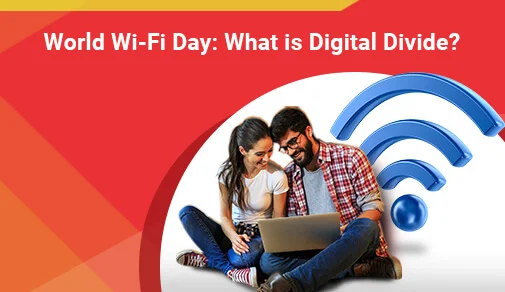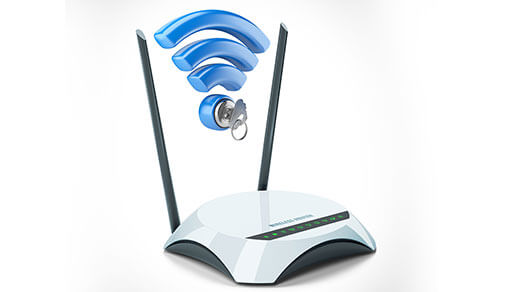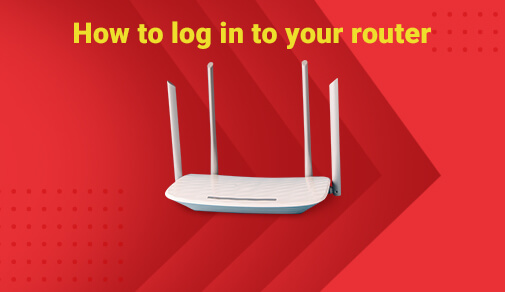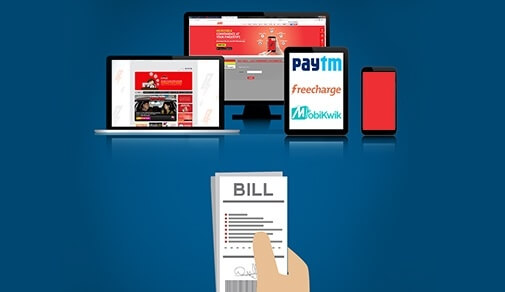
Despite the fact that connectivity is becoming increasingly important, millions of Indians still do not have access to the internet. A year after COVID-19 compelled the country to operate online, the digital divide, or the gap between those who have access to computers and high-speed internet and those who do not, is still preventing millions of Indians from working and learning at home.
What is the significance of the digital divide?
According to the Pew Research Center, more than half of people in 32 of the 34 nations studied use the internet at least occasionally or own a smartphone. As a result, those who do not have access to the internet may face serious consequences.
Individuals may be unable to get services, news and information, social interactions, or employment prospects if they do not have access to the internet. As more important services, such as vaccine scheduling, unemployment benefits applications, and medical visits, become predominantly internet-based, the repercussions of the digital divide will only grow.
What are some of the variables that contribute to the digital divide?
When it comes to internet connectivity, many Indians are having problems. According to a recent Oxfam survey, up to 80% of Indian students were unable to access online instruction during the lockdown, and many will not return to their courses when they reopen. That's just one example of how the pandemic has widened the country's digital divide — the barrier between those who have the resources and expertise to benefit from the internet and those who don't — aggravating already high levels of inequality and putting a damper on economic growth. While the disparity isn't unique to India, it's especially pronounced in a country where more than half of the 1.3 billion people are under the age of 25.
The digital divide exists as a result of two issues: access and affordability. As a result, the predominant demographics of persons without internet access are rural populations and low-income households.
Accessibility:
Bridging the digital divide between rural and urban inhabitants is particularly difficult because rural broadband expansion is a costly and time-consuming procedure. The government has spent billions of dollars developing rural internet connection over the last five years. Despite these expenditures, broadband connectivity remains a problem.
Affordability:
Despite the fact that millions of Indians live in urban areas and have access to multiple internet providers, they still do not have internet connection. According to the Pew Research Center, more than half of Indians who do not have access to the internet believe it is because it is too costly.
What internet connection speeds do Indians require?
The industry standard for high-speed internet is 25 megabits per second (Mbps) download and 3 megabits per second upload. However, it is believed that over 90% of Indians with internet connection have download rates of at least 100 Mbps.
Broadband expansion for rural and low-income families will still result in a big split in internet speeds, as the gap between 25 Mbps, 100 Mbps, and 250 Mbps is enormous. With only 25 Mbps, for example, a complete family would struggle to work and learn remotely. 100 Mbps, on the other hand, is enough for two to three family members to share, and 250 Mbps is enough for five to six family members to share.
India and Internet Access:
With 600 million internet users, India ranks second in the globe, accounting for more than 12% of all internet users. According to government data, half of India's population lacks internet connection, and even if they do, just 20% of Indians know how to use digital services.
India has the world's second-largest pool of internet users, with 600 million users accounting for more than 12% of all users worldwide. According to government data, half of India's population does not have access to the internet, and even if they have, just 20% of Indians know how to use digital services.
Prior to the outbreak, government analysts predicted that India's digital transformation might release up to $1 trillion in economic value over the next five years. However, the crisis is unevenly dispersing these benefits and exacerbating socioeconomic disparities, with girls suffering more than boys and rural areas suffering more than urban regions.
Facets of India’s Digital Divide:

offer 24x7 assured speeds?
Connect now to get the best of broadband plans and get additional offers on:
Telecom Industry’s Growth:
In February 2020, the country had over 1,160 million cellular users, up from 1,010 million in February 2016, according to a study released by the Telecom Regulatory Authority of India (TRAI) in June. In five years, the number of subscribers has increased by 150 million, or 30 million per year. The increase in urban and rural subscribers was evenly divided, with urban subscribers increasing by 74 million (from 579 million to 643 million) and rural customers increasing by 86 million (from 431 million to 517 million). However, this increase simply reflects an increase in basic telecommunications infrastructure.
The Urban-Rural Divide:
According to the NSSO survey performed between July 2017 and June 2018, only 4.4 percent of rural households own a computer, compared to 14.4% in metropolitan areas. Only 14.9 percent of rural homes have access to the internet, compared to 42 percent of urban homes. Similarly, only 13% of people over the age of five in rural areas have access to the internet, compared to 37% in urban regions.
Regional Divide:
The number of people with access to computers and knowledge of how to use the internet varies substantially throughout states. In both rural and urban areas, Himachal Pradesh tops the country in internet connectivity. The state with the most computers in urban areas is Uttarakhand, whereas Kerala has the most computers in rural regions. Kerala is the state with the smallest gap between rural and urban areas.
Digital Gender Divide:
India has one of the world's largest gender gaps in technology access. According to the GSMA's 2020 mobile gender gap report, only 21% of women in India have access to the internet, while 42% of males have. According to the report, while 79 percent of men in the country own a cellphone, only 63 percent of women do. While financial constraints to owning a cellphone or laptop exist, cultural and social conventions also play a significant role. The disparity in mobile usage between men and women sometimes exacerbates other inequities for women, such as access to information, economic prospects, and networking chances.
Closing the Digital Divide:
India's digital divide is still wide, with more than 400 million people without internet access. In addition, there is a significant spatial digital gap (internet density in rural areas is lower than in metropolitan regions), as well as a significant gender digital difference (far fewer women have access to smartphones than men).
The Indian government is taking substantial effort to improve its information and technology skills in order to address the country's digital divide.
- India's Digital Future Government initiatives to expand internet connectivity in the country. On the linked website, you may learn more about Digital India. Among the efforts that fall within this heading are:
- The BharatNet project was initiated in 2011 with the goal of connecting India's villages and connecting 0.25 million panchayats over an optical fibre network (100 MBPS).
- The National Digital Literacy Mission and the Digital Saksharta Abhiyan were established by the government in 2014.
- The government announced various programmes as part of its Digital India campaign in 2015, with the goal of connecting the entire country.
- The PM Gramin Digital Saksharta Abhiyan was launched in 2017 with the goal of bringing digital literacy to 60 million rural Indian families.
- Because of the importance of digital literacy, India's Supreme Court has declared the ability to access the Internet as a basic right, incorporating it within Article 21 of the Constitution's right to privacy and right to education.
- Google India and Tata Trusts jointly established the Internet Saathi Program in 2015. The goal of this project is to help rural Indian women become more digitally literate.
- The National Optical Fibre Network (NOF-N) is a project that aims to provide broadband access to over two lakh (200,000) gramme panchayats across India.
- Unnati Project — Hindustan Petroleum Corporation Limited (HPCL), which aims to close the digital divide in schools by providing computer education to rural pupils from low-income families.
- Radio broadcasting is used for children in distant locations who are not online on Air Shiksha Vani, DAISY by NIOS for differently abled, and e-PathShala.
How ACT Fibernet has helped bridge the gap -
Providing Hotspots to Migrant Labour Camps in Bangalore:
Most of us hear & see the plight that migrant workers are undergoing during the pandemic. While we feel for their cause, our team at ACT went ahead and tried making a slight difference to their lives. We set up 8 wifi hotspots and 2 TVs connected with our 4K streaming device (to browse channels and watch movies) at the migrant labourer camp at Thanisandra (behind Manyata Tech Park) to provide communication and entertainment for 1000 people who are housed there. Today, they can browse the internet with 20 mbps speed and unlimited data.
Connecting Parks to Build a Smart City:
ACT Fibernet created Wifi Hotspots at Nageshwara Park, Chennai inaugurated by Dr. R. Natarajan IPS (MLA Of Mylapore and former DGP of TN) and Mr. Prakash IAS, Commissioner of Greater Chennai corporation on 6th March '2020 to help in building of smart cities.
Knowledge Centre Inaugurated in City Armed Reserve (CAR) Headquarters:
ACT Fibernet helped in creating a knowledge centre for children of City Armed reserve at the Police quarters of CAR headquarters at Mysore Road, Chamarajpet. The knowledge centre was set up with computers, library, educational material, etc. ACT Fibernet also conducted basic computer courses for the children.
Launch of DAISY software for the visually Impaired:
ACT Fibernet, along with Karna Vidya Foundation to develop a DAISY format to help blind students study 11th and 12th std syllabus of CBSE and TN state board. The whole syllabus can now be converted from text to speech format.
We, at ACT Fibernet, will continue to march towards digital inclusion!
You can know more about our CSR initiatives here.
Read tips and tricks to increase your wifi speed here
Be Part Of Our Network
All Categories
- BUSINESS INTERNET
- Router
- Internet Security
- Wi-Fi Connection
- Wi-Fi Network
- Internet Broadband
- smartfiber
- Internet Speed
- TV Streaming
- Wifi Connection
- BEST BROADBAND PLANS
- BROADBAND PLANS | 5GHz
- 2.4GHz
- 5GHz frequency
- 5GHz WiFi frequency
- 2.4GHz frequency
- LDRs
- LONG DISTANCE RELATIONSHIP
- ACT Fibernet
- wifi as a service
RECENT ARTICLES

Find the perfect internet plan for you!















